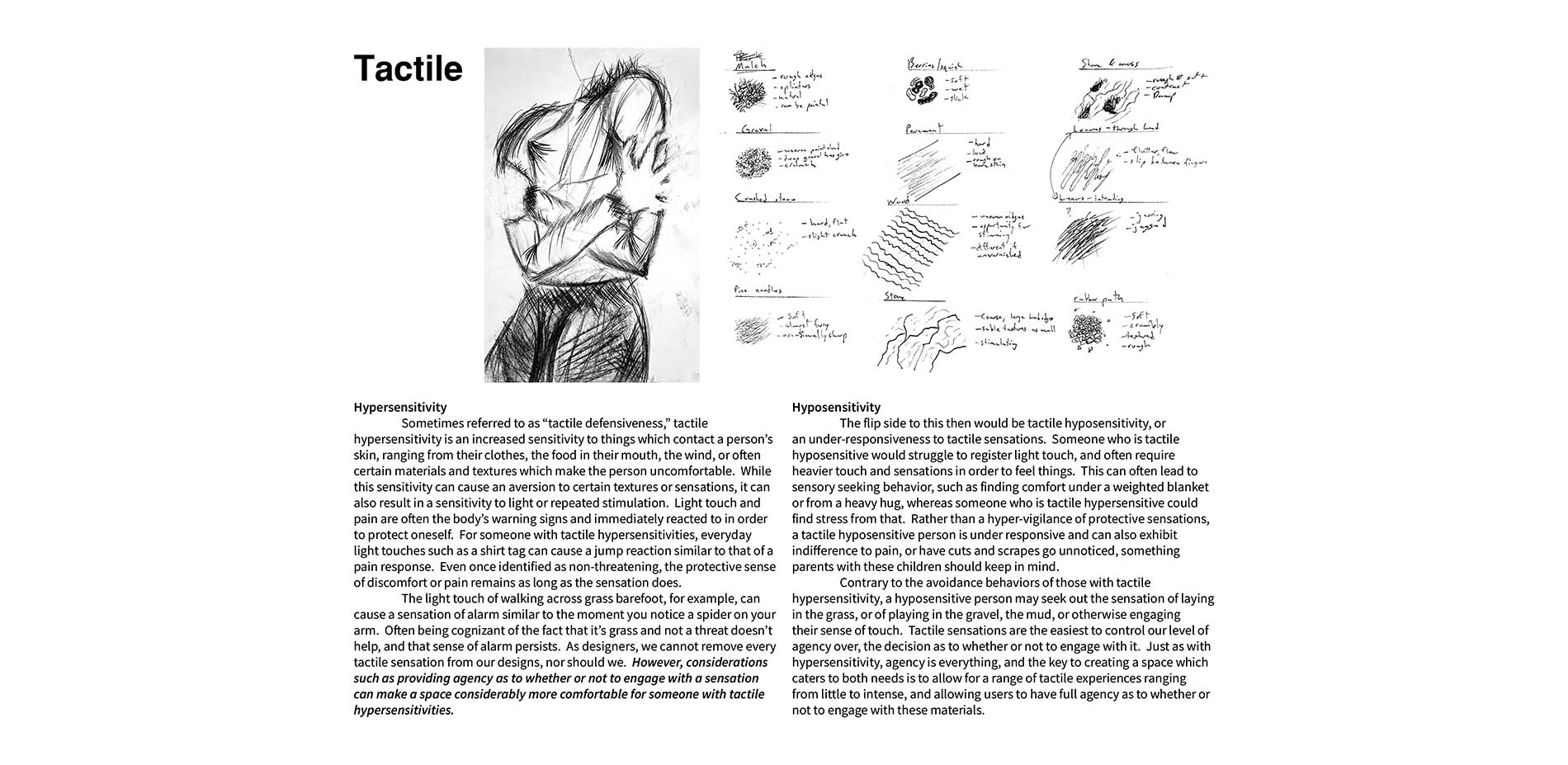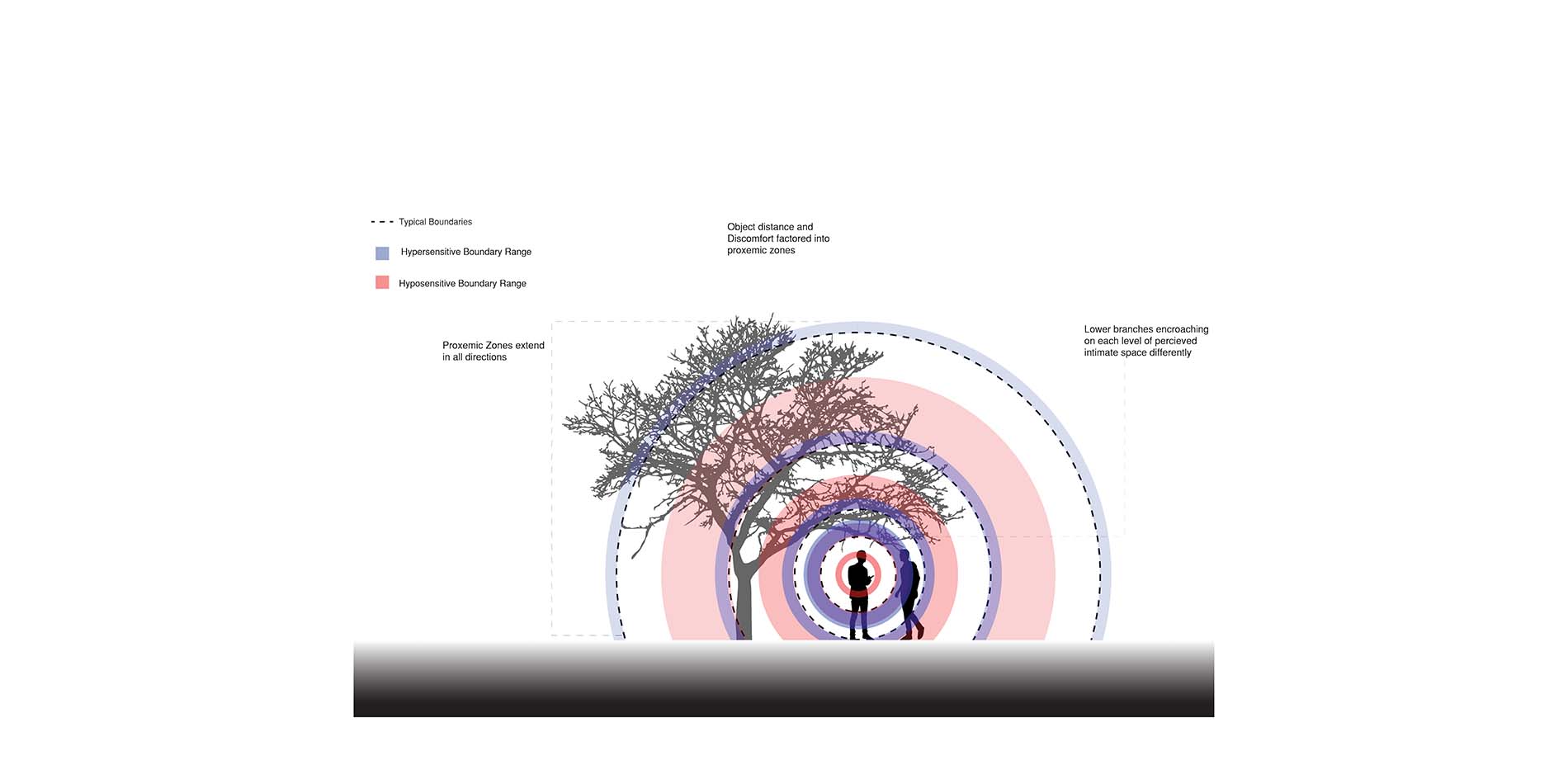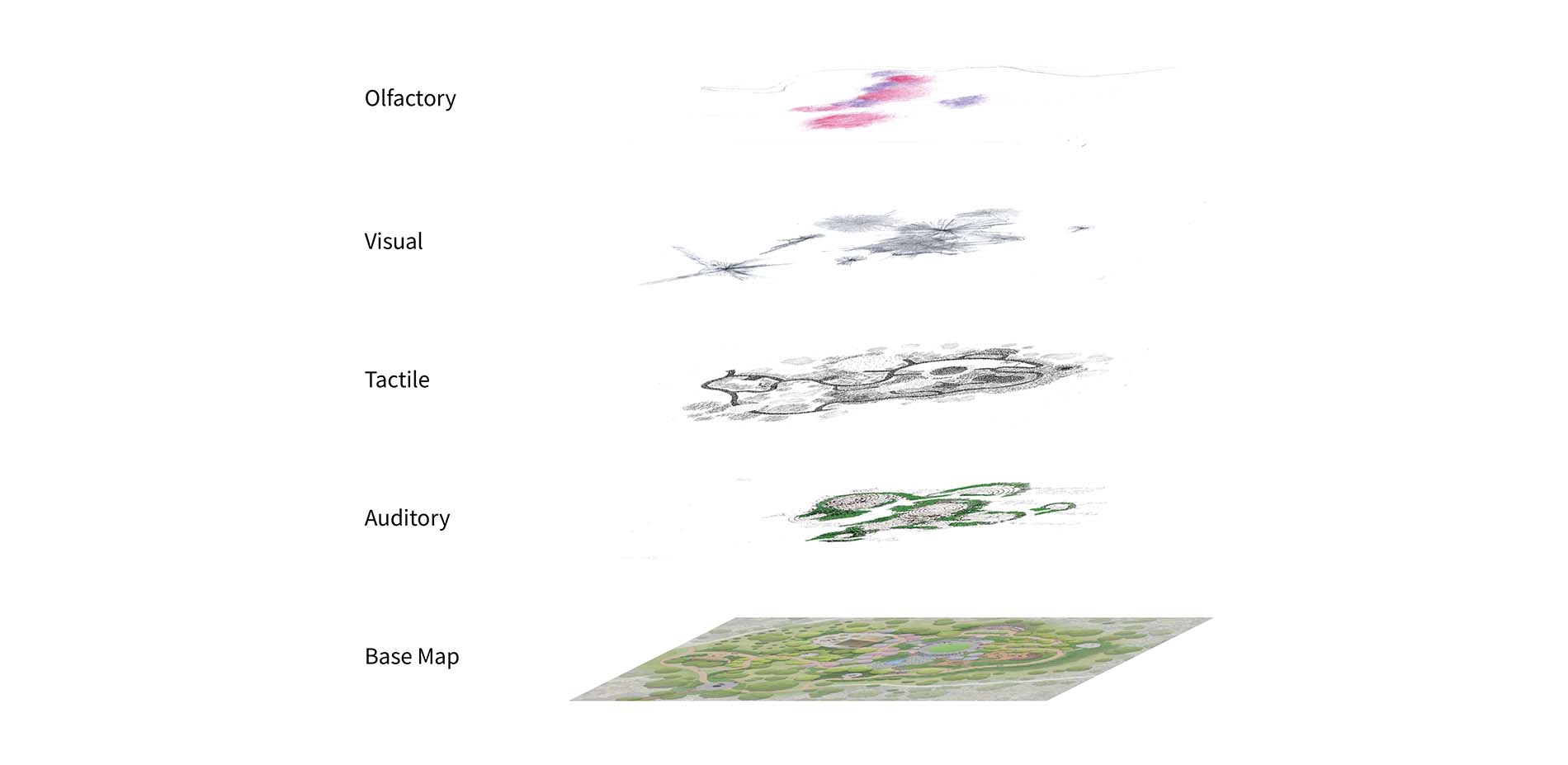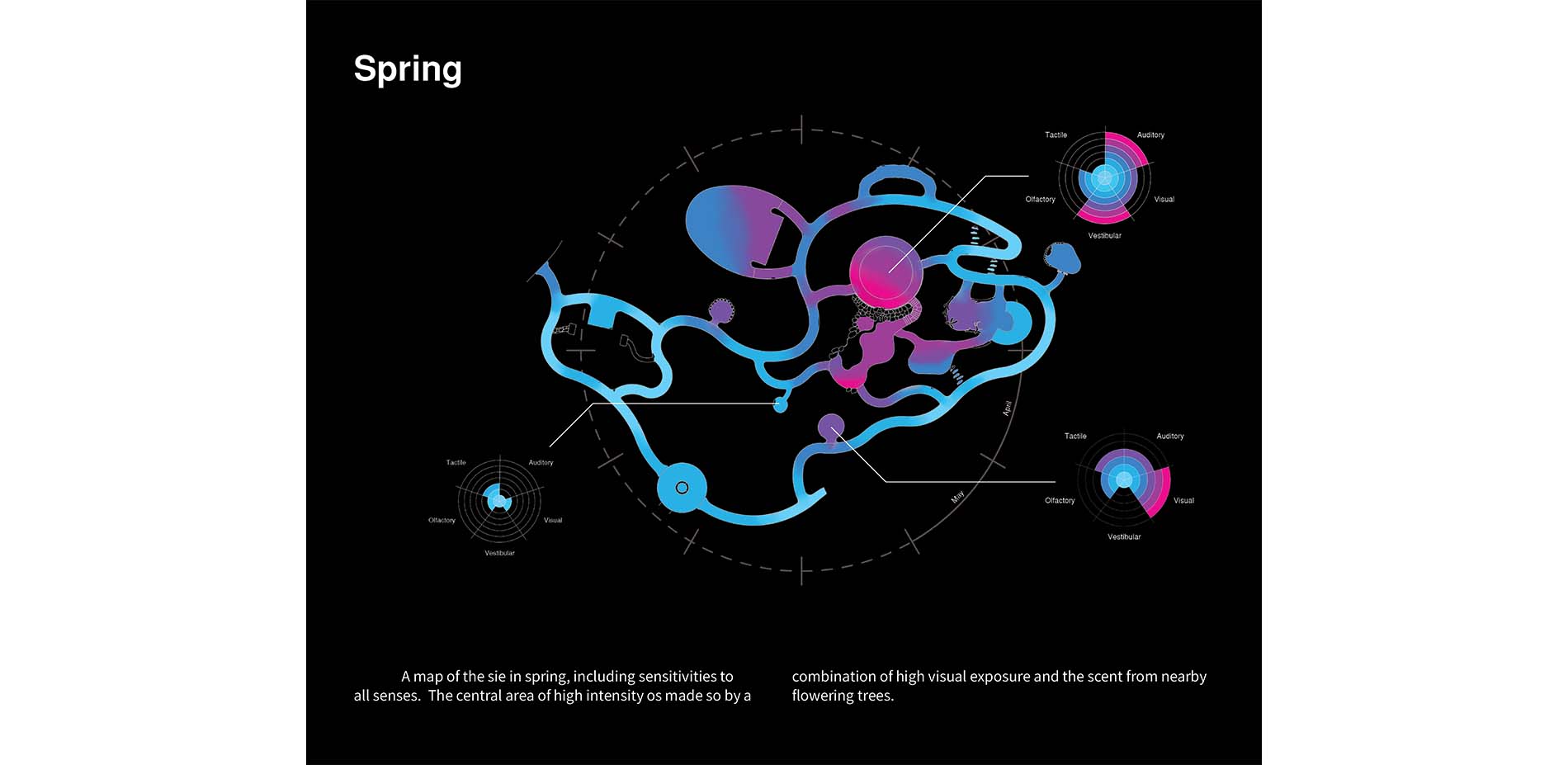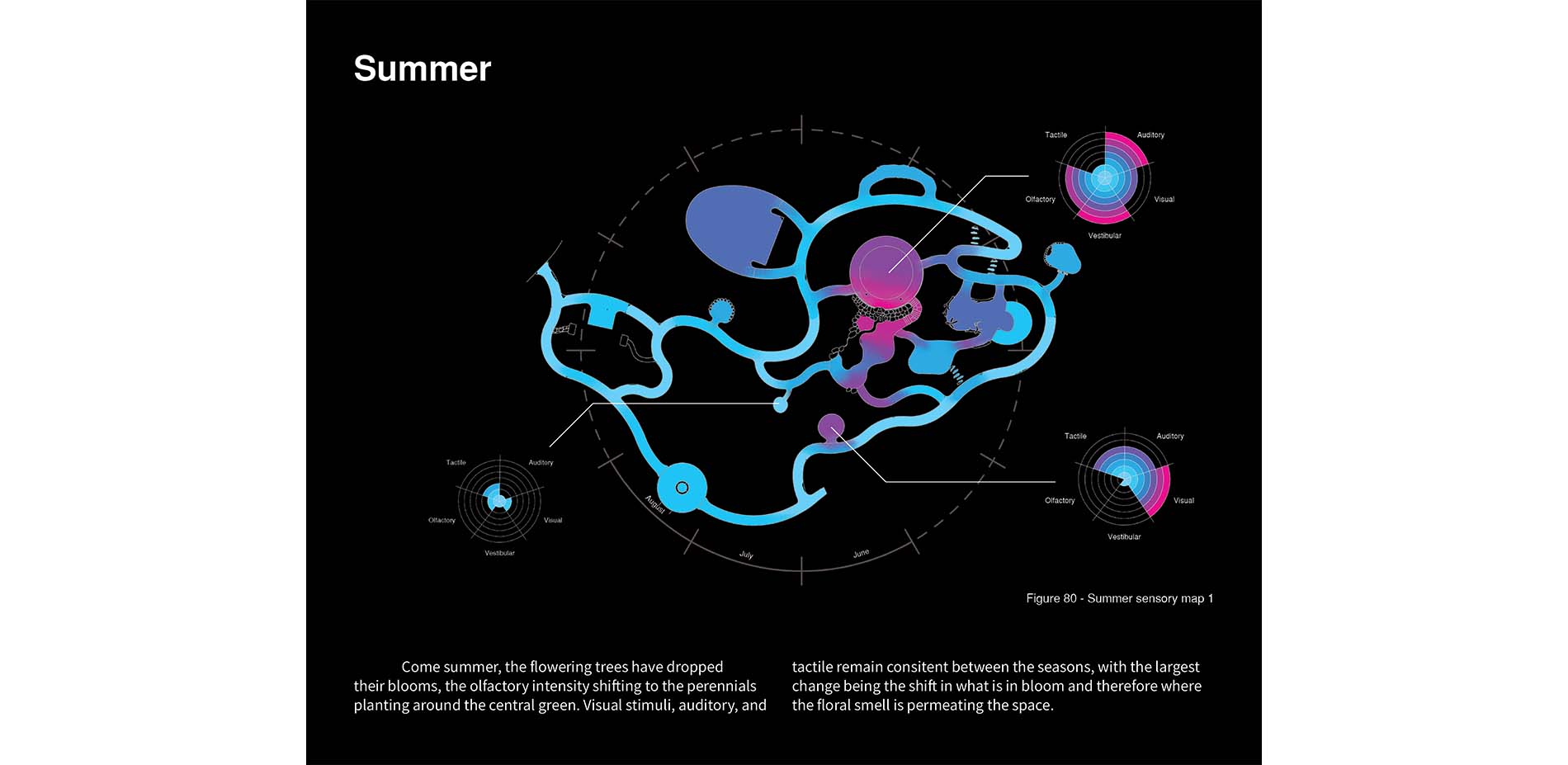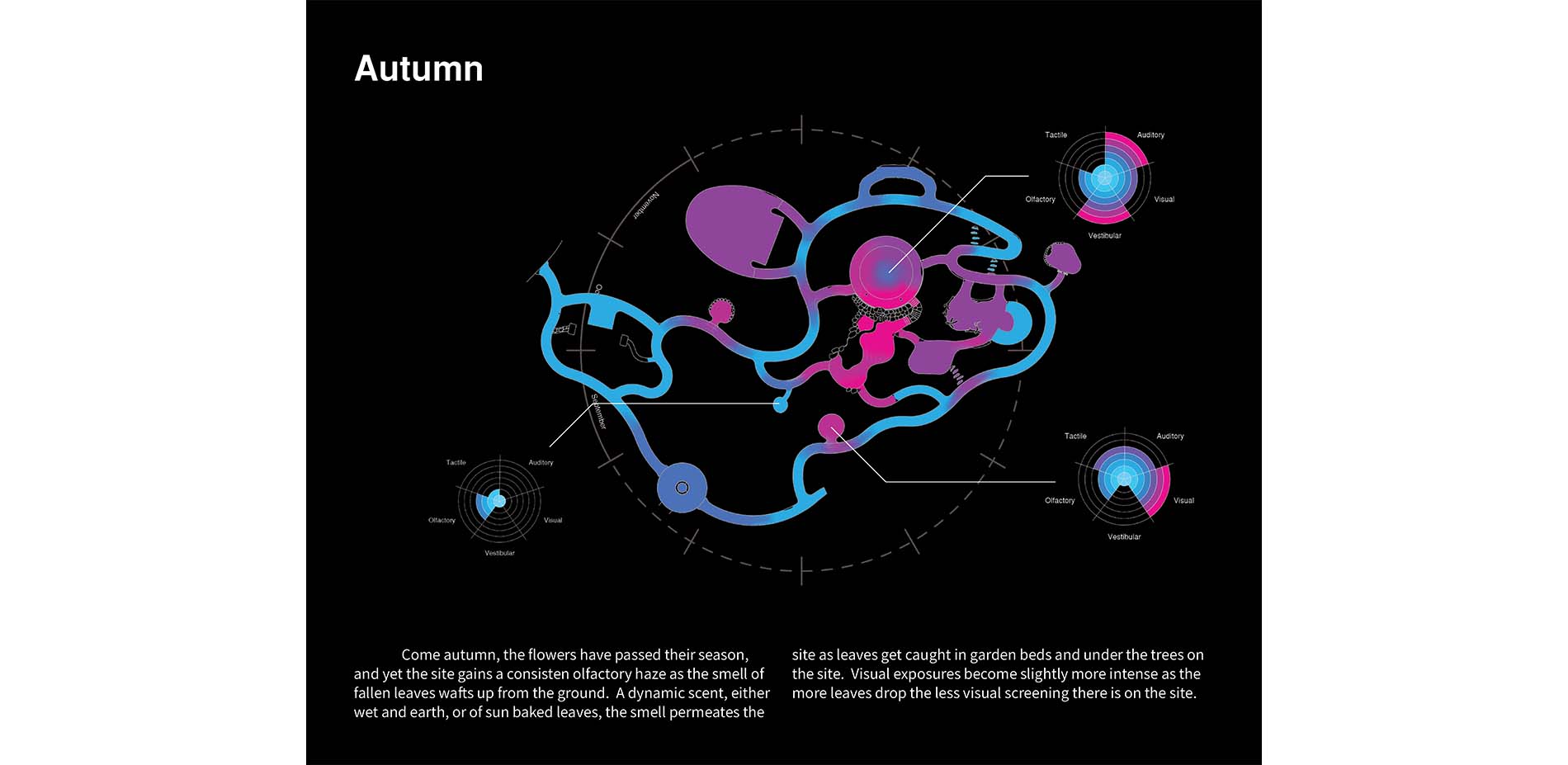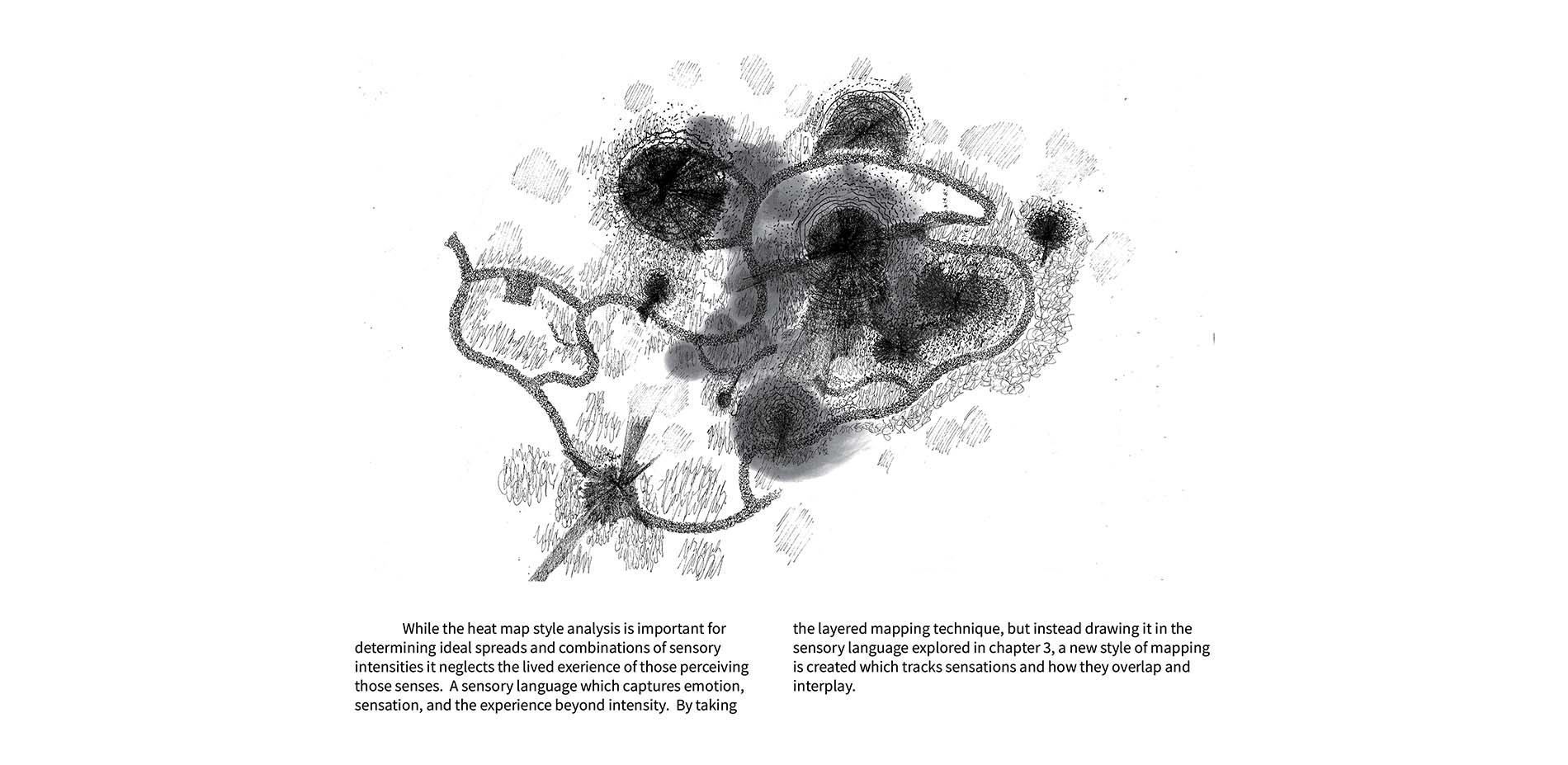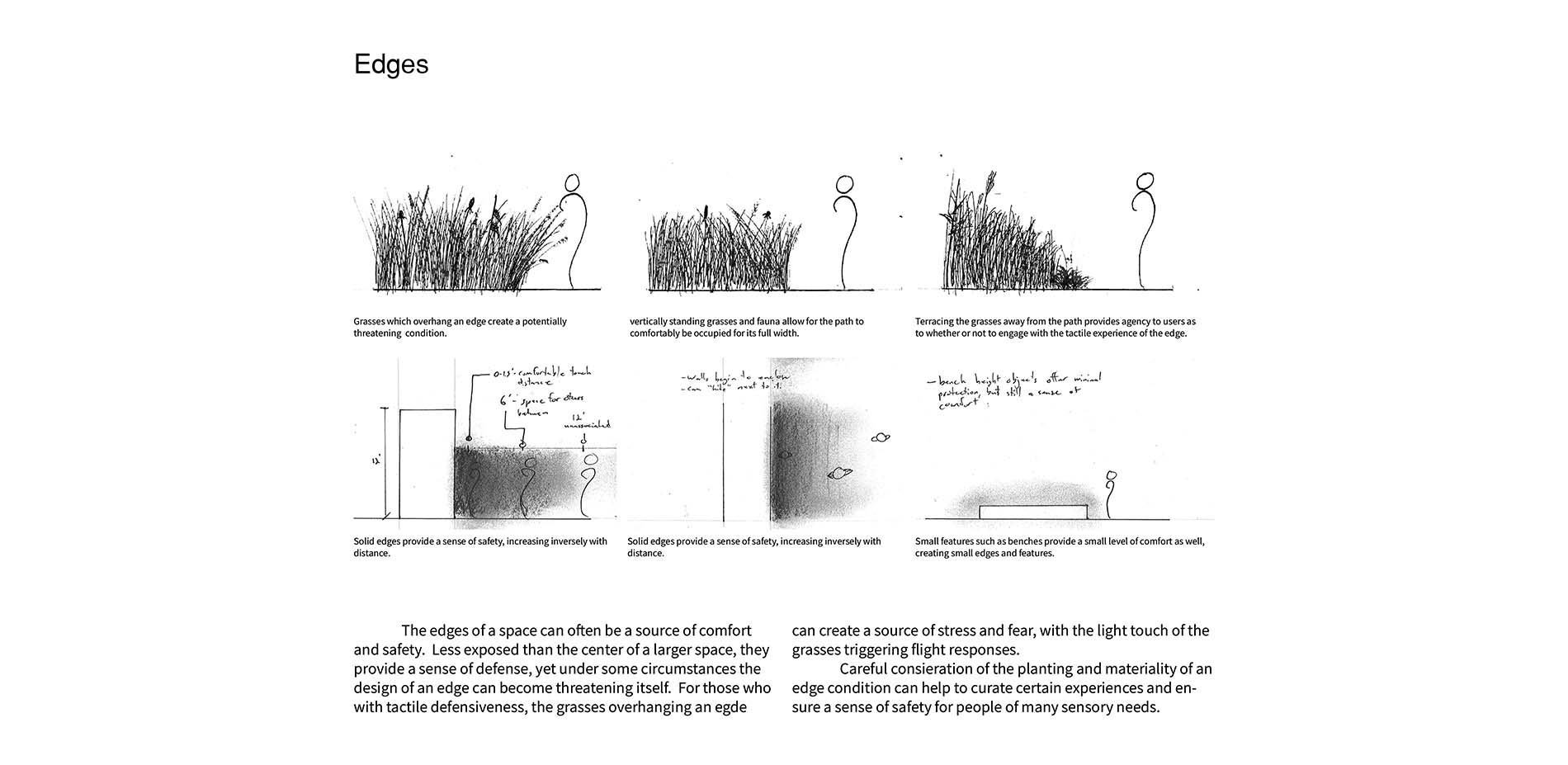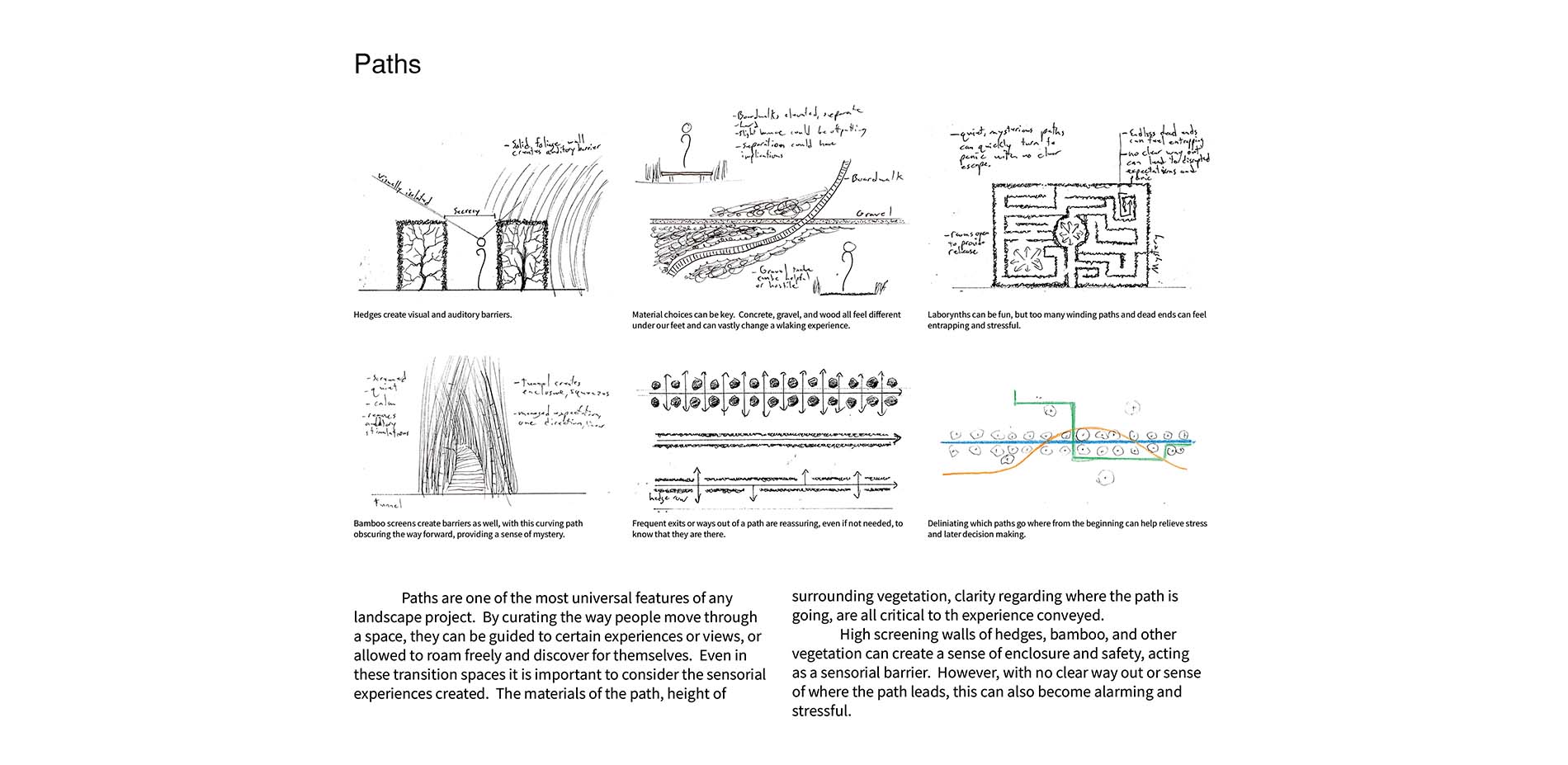Designing Spectrums
Honor Award
Research
Ithaca, New York, United States
Benjamin Jensen, Associate ASLA;
Faculty Advisors:
Duarte Santo;
Cornell University
An Important and timely work grounded in lived experiences. An interesting mix of qualitative research approaches including hand sketching. This project was given high credits as this is very enlightened but equally difficult, but sharing this information is truly helping the profession.
- 2023 Awards Jury
Project Credits
Kathryn Gleason
Thesis Committee
Project Statement
As landscape architects we design spaces for people through an assumption of the normative self and experience without taking into account the multiplicity of diverse neurological and sensory experiences. 1 in 44 on the autism spectrum. This neurodivergence means that the experience of the world most designers are familiar with is not theirs, and therefore, that the world wasn't designed for them. This research, by pushing new understandings of autism, generating new methods of landscape analysis, and a visual language to represent an autistic sensorial experience, new understandings can be generated within neurotypical designers and lead to more mindful and inclusive design of the public realm.
Project Narrative
I’ve always been aware of neurodiversity, of my own neurodiversity. Autism though, was one thing I was only vaguely aware of. I knew the basics, that was it. I’ve spent my life knowing I was different, just not knowing how, trying to find my way through a world which wasn’t made for me. I received my autism diagnosis at the age of 25. I hadn’t exactly seen it coming, but once it was said out loud, everything suddenly made sense. My abhorrence of concerts where the noise only seems to bother me, my ability to hyper-focus on the most obscure topic for a week then lose all interest, the missed social queues and the struggle to listen in a crowded lecture hall. The list goes on.
As I learned what to look for, I came to see how much more comfortable I can be throughout the day by avoiding certain things, and in turn, came to see how little of our built environment is build for people like me. Physical disabilities are so easily seen, and therefore advocated for and addressed. I love when I see accessible design integrated into a place so it belongs, is a part of the whole. When it comes to cognitive differences, to neurodivergence, we aren’t so easily seen.. Perhaps this invisible “disability” is why autistic and neurodivergent needs have gone largely unaddressed in public design. Or if we are, how can you design for an experience of the world you’ve never shared? One which you don’t know.
As I pursue this research, I place myself in the driver seat of a research project of which I am one of the subjects. My experiences are my window into this world, a structure of support from which I can build, but they are also something I have to step out of, to explore other autistic experiences I don’t share. The autism spectrum is not a binary, there is an infinite multiplicity of autistic experiences, and mine is but one. This research is about advocacy, about bringing to light things and experiences that go unseen by designers, and yet are affected by our work every day. This research is about methodologies and tools of analysis and design which can be used to address those needs. And for me, this research is a pursuit of self discovery. In the following pages I will be showing you what I have learned about myself, about my community, about what we need and how as designers we have the chance to make the world a better place not only for this community, but for everyone who shares these experiences.

